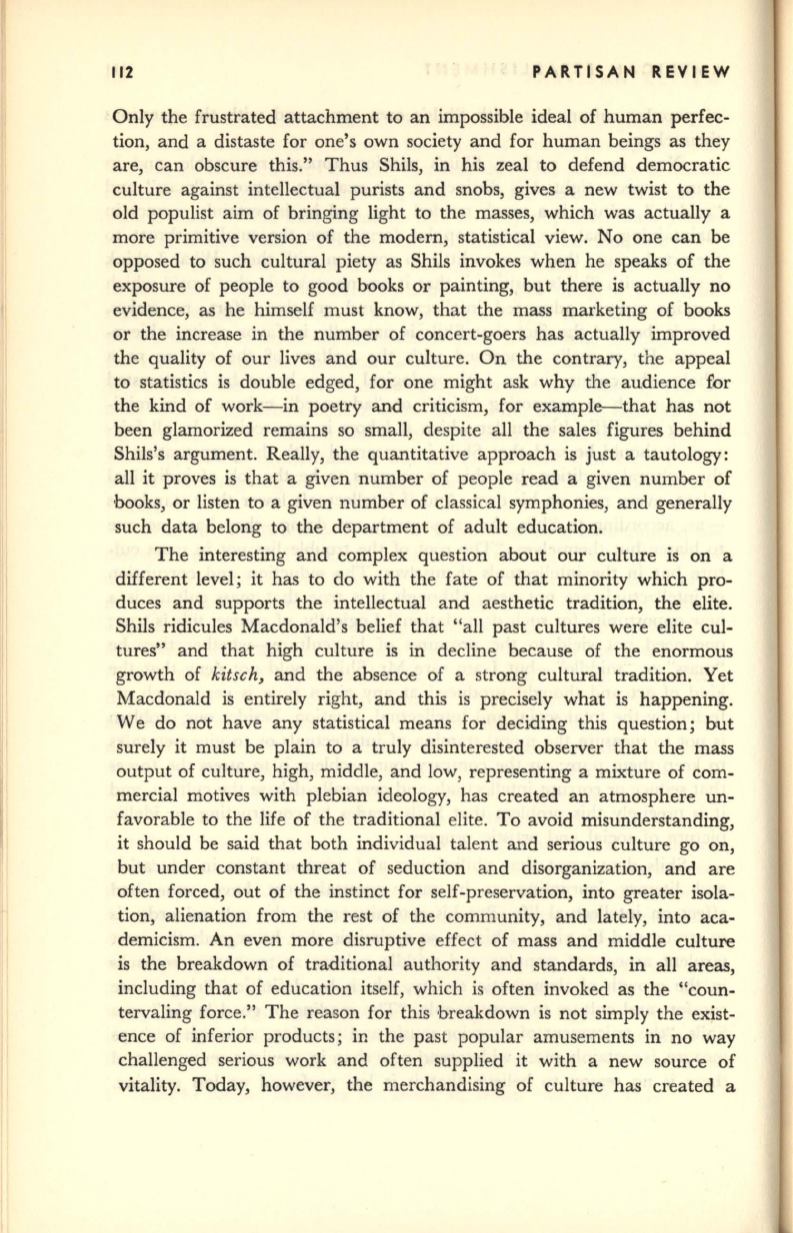
112
PARTISAN REVIEW
Only the frustrated attachment to an impossible ideal of human perfec–
tion, and a distaste for one's own society and for human beings as they
are, can obscure this." Thus Shils, in his zeal to defend democratic
culture against intellectual purists and snobs, gives a new twist to the
old populist aim of bringing light to the masses, which was actually a
more primitive version of the modem, statistical view. No one can be
opposed to such cultural piety as Shils invokes when he speaks of the
exposure of people to good books or painting, but there is actually no
evidence, as he himself must know, that the mass marketing of books
or the increase in the number of concert-goers has actually improved
the quality of our lives and our culture. On the contrary, the appeal
to statistics is double edged, for one might ask why the audience for
the kind of work-in poetry and criticism, for example--that has not
been glamorized remains so small, despite all the sales figures behind
Shils's argument. Really, the quantitative approach is just a tautology:
all it proves is that a given number of people read a given number of
books, or listen to a given number of classical symphonies, and generally
such data belong to the department of adult education.
The interesting and complex question about our culture is on a
different level; it has to do with the fate of that minority which pro–
duces and supports the intellectual and aesthetic tradition, the elite.
Shils ridicules Macdonald's belief that "all past cultures were elite cul–
tures" and that high culture is in decline because of the enormous
growth of
kitsch,
and the absence of a strong cultural tradition. Yet
Macdonald is entirely right, and this is precisely what is happening.
We do not have any statistical means for deciding this question; but
surely it must be plain to a truly disinterested observer that the mass
output of culture, high, middle, and low, representing a mixture of com–
mercial motives with plebian ideology, has created an atmosphere un–
favorable to the life of the traditional elite. To avoid misunderstanding,
it should be said that both individual talent and serious culture go on,
but under constant threat of seduction and disorganization, and are
often forced, out of the instinct for self-preservation, into greater isola–
tion, alienation from the rest of the community, and lately, into aca–
demicism. An even more disruptive effect of mass and middle culture
is the breakdown of traditional authority and standards, in all areas,
including that of education itself, which is often invoked as the "coun–
tervaling force." The reason for this breakdown is not simply the exist–
ence of inferior products; in the past popular amusements in no way
challenged serious work and often supplied it with a new source of
vitality. Today, however, the merchandising of culture has created a


